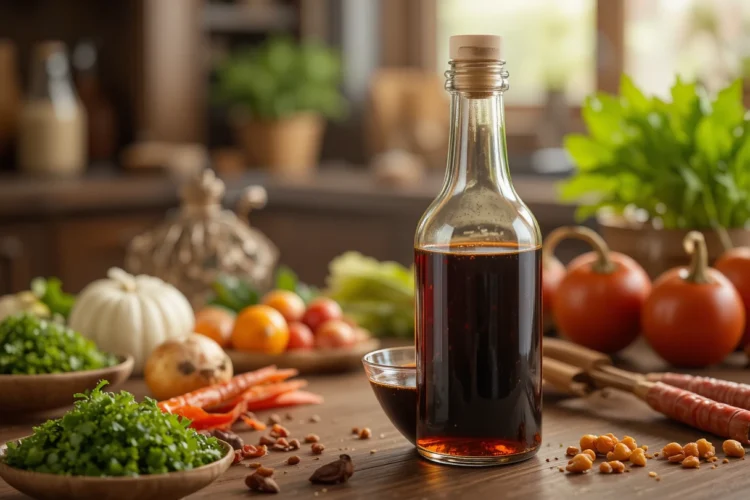Light soy sauce is one of the most important ingredients in Asian cooking. It adds a wonderful savory flavor, known as umami, that makes fried rice, noodles, and stir-fries taste amazing. This sauce gives flavor and aroma to food without making it dark or heavy. This article will explain the ingredients, the best ways to use them in your kitchen, and most importantly, how to check that your light soy sauce is 100% halal.
What is Light Soy Sauce?
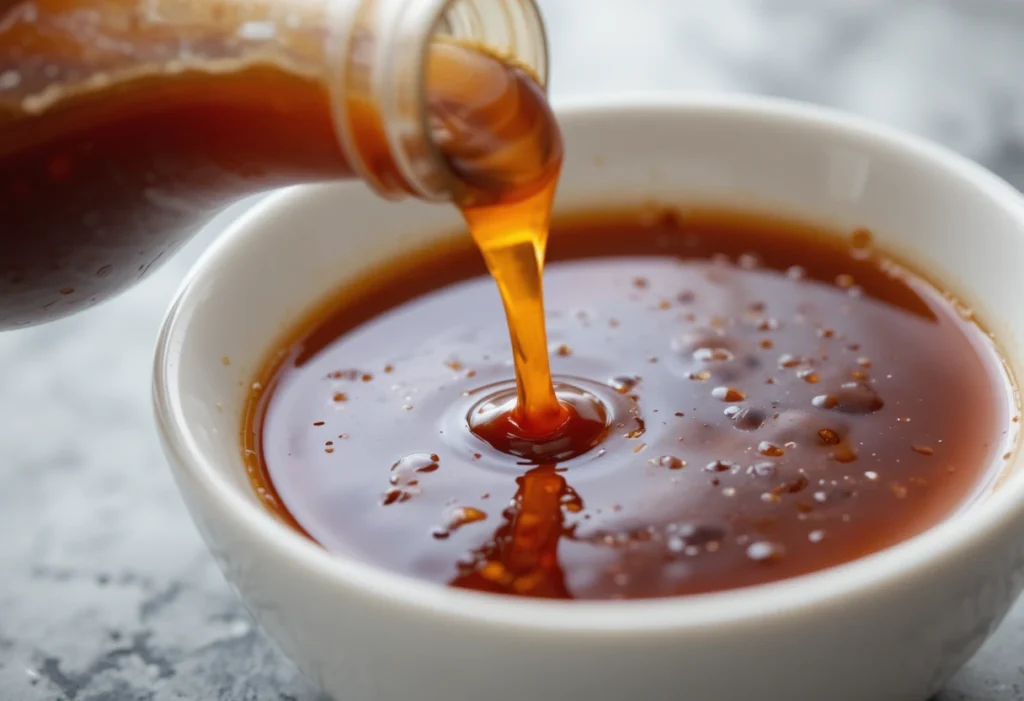
Light soy sauce is a thin, salty, and savory liquid made mainly from fermented soybeans. It is the most common type of soy sauce used in the kitchen, especially in Chinese cooking.
It is important to know that light soy sauce is different from dark soy sauce. Light soy sauce is saltier and has a lighter, reddish-brown color, which is why it is perfect for seasoning dishes without changing their color too much. It adds pure saltiness and umami, making it a powerful flavor enhancer.
Ingredients Used in Light Soy Sauce
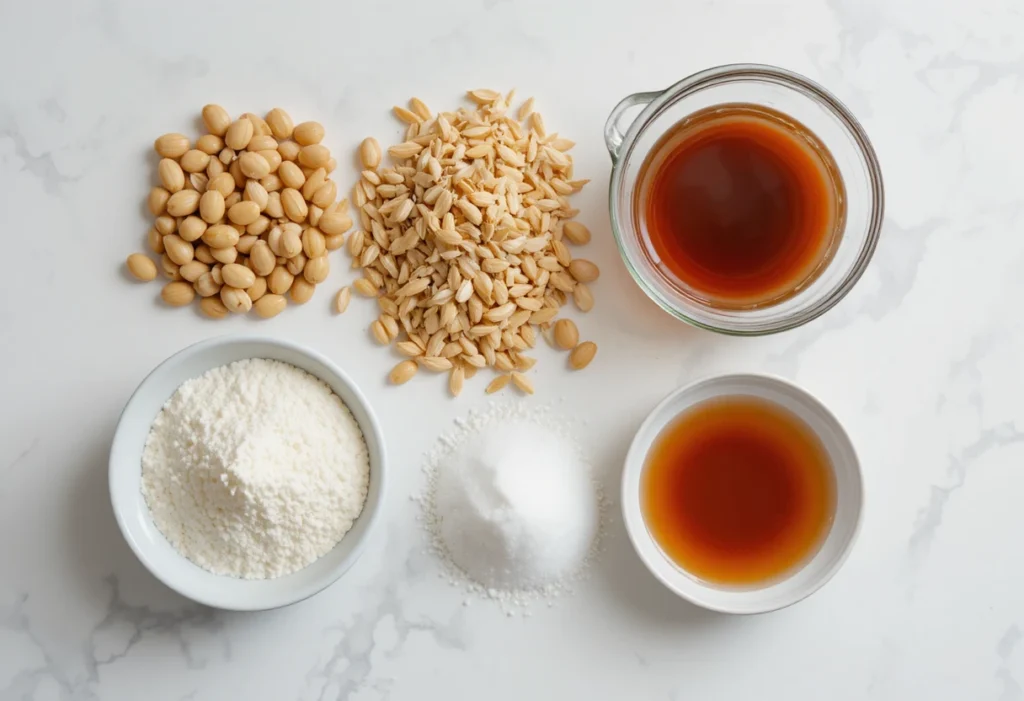
Light soy sauce is made from a few basic ingredients that go through a process called fermentation. All these ingredients are naturally halal, but the production process requires checking.
| Ingredient | Role in Light Soy Sauce |
|---|---|
| Water | The base for the entire fermentation and final liquid. |
| Soybeans | The main source of protein and umami flavor. |
| Salt | Essential for flavor, preservation, and controlling fermentation. |
| Wheat Flour | Adds a mild sweetness and aroma. (Some versions skip this for gluten-free soy sauce). |
| Sugar | Added in small amounts for flavor balance. |
| Caramel Coloring | Gives the final sauce its light brown color (usually plant-based and safe). |
Halal Certification for Light Soy Sauce
While all the ingredients listed above are naturally halal, the fermentation process can sometimes create small amounts of alcohol. For this reason, if you are buying light soy sauce, you must always look for these labels to ensure it is suitable for Muslims:
- “Halal Certified”
- “No Alcohol Used in Fermentation”
- “Naturally Brewed – Alcohol Free”
Many popular brands now offer certified halal options that are safe to use in all your cooking.
How Light Soy Sauce Is Made
The process of making light soy sauce is ancient and simple, relying on natural fermentation:
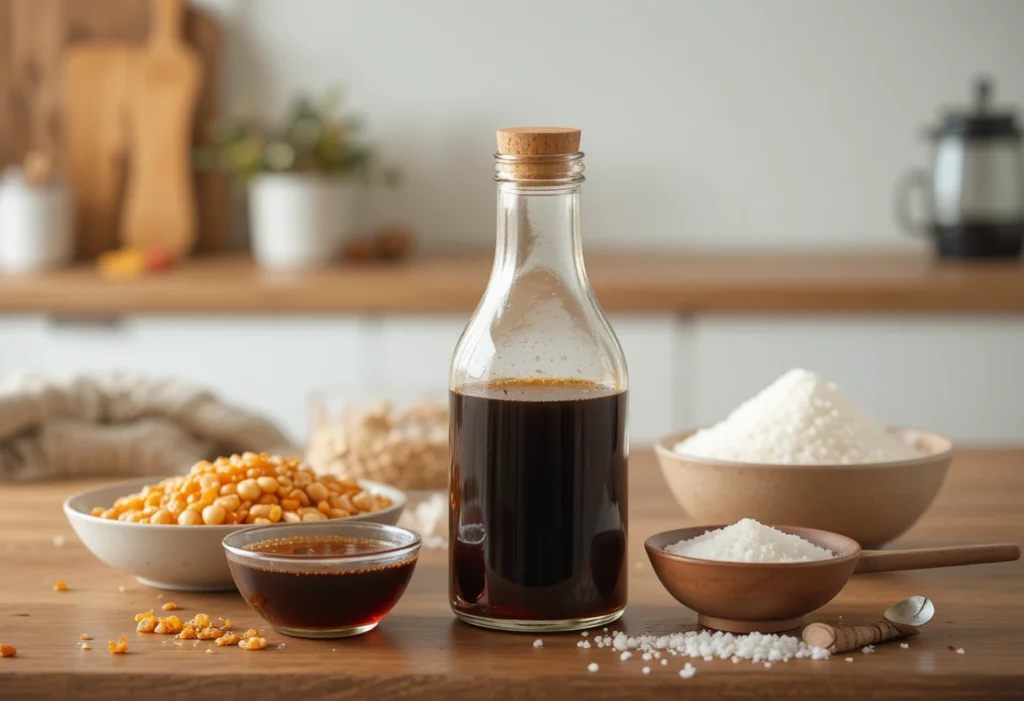
- Soaking: Soybeans and wheat are soaked in water.
- Mixing: The soybeans, wheat, and a special culture (like mold) are mixed together.
- Fermentation: This mixture is aged for months in large vats with salt and water. This is where the magic happens, creating the deep umami flavor.
- Filtering: The liquid is pressed out of the solid mixture and filtered to become the smooth sauce we buy.
Modern brands that are halal-certified carefully control this fermentation process to ensure the final product contains no alcohol, making it safe for consumption.
Uses of Light Soy Sauce in Cooking
Light soy sauce is incredibly versatile. Here are the most popular ways to use it:
- Stir-Fries and Noodles: It is the primary seasoning for dishes like fried rice and stir-fried vegetables, adding salt and umami without darkening the food too much.
- Dipping Sauce: It is often used as the base for dipping sauces for spring rolls, dumplings (like dim sum), or sushi.
- Marinades: A little light soy sauce goes a long way in marinating halal chicken, beef, or tofu before grilling or frying.
- Soup Seasoning: Use a dash to add a salty, savory depth to soups and broth-based dishes. For example, it perfectly balances the rich broth in a hearty Braised Beef Noodle Soup or adds umami to a warming bowl of Spicy Chicken Noodle Soup. Even a famous Thai dish like Tom Yum Recipe can benefit from a small touch of light soy sauce for added savory flavor.
Remember, because it is saltier than dark soy sauce, start with just one or two teaspoons and add more as needed.
Dark soy sauce vs Light soy sauce

It is important to know the differences when following a recipe:
| Feature | Light Soy Sauce | Dark Soy Sauce |
|---|---|---|
| Color | Light brown, thin | Dark brown, thick, and syrupy |
| Taste | Very salty, rich umami | Less salty, slightly sweeter |
| Use | Seasoning, dipping, marinades | Coloring, stews, braised meat |
| Effect on Food | Adds flavor without darkening | Adds color and thickness |
Frequently Asked Questions (FAQs) About Light Soy Sauce
Q1: Can I use light soy sauce instead of dark soy sauce?
A: You can, but your food will look much lighter and may not have the rich color expected in dishes like stews or braised meats. You might also need to add less salt because it is saltier.
Q2: Is all soy sauce halal?
A: Not always. Because traditional brewing involves fermentation, some soy sauces contain trace amounts of alcohol. For safety, always choose products clearly marked “Halal Certified” or “Alcohol-Free.”
Q3: Does light soy sauce expire?
A: Yes. Unopened bottles can last for 1 to 2 years. Once you open the bottle, it is best to store it in the refrigerator to keep the flavor fresh for about six months.
Q4: Is light soy sauce gluten-free?
A: Only if the label says so. Traditional light soy sauce contains wheat, but many brands now offer gluten-free versions made only with soybeans and rice.
Q5: How much light soy sauce should I use?
A: Start with a small amount, like 1 to 2 teaspoons for a full plate of fried rice or noodles. Always taste your food before adding more, as it is very salty.
Conclusion: A Halal and Flavorful Essential
Light soy sauce is a simple, effective, and flavorful ingredient that can transform your cooking. By understanding the ingredients and checking for the “Halal Certified” label, you can safely enjoy this essential sauce in all your favorite Asian dishes. It’s a versatile, umami-rich addition to any halal kitchen!
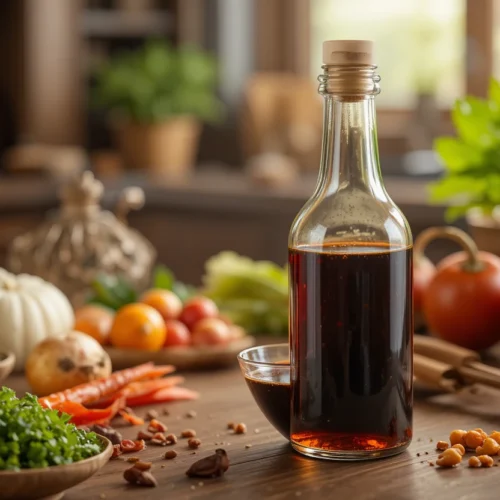
Light Soy Sauce
Ingredients
- 2 cups soybeans
- 1 cup wheat flour optional for gluten-free versions
- 5 cups water
- 1 cup salt
- 1 tablespoon sugar optional
- ½ teaspoon caramel coloring optional, halal and plant-based
Instructions
- Soak the Soybeans: Place soybeans in water and soak overnight until soft.
- Steam or Boil: Cook the soybeans until tender.
- Mix with Wheat Flour: Blend the beans with flour to start the fermentation base. (Skip this for gluten-free.)
- Ferment Naturally: Transfer to a clean container, add salt and water, and let it ferment for 2–3 months in a warm, dark place.
- Filter the Liquid: Once fermented, strain the mixture to separate the sauce from solids.
- Add Flavor (Optional): Stir in sugar or caramel coloring for sweetness and color.
- Bottle & Store: Pour into bottles and store in the fridge for freshness.
Notes
- 1 tablespoon (15 ml) seasons one serving of fried rice or noodles.
- Use 2 tablespoons for marinades or soups.
- A 250 ml sauce in 2 bottles provides around 16–17 servings, enough for several meals.
